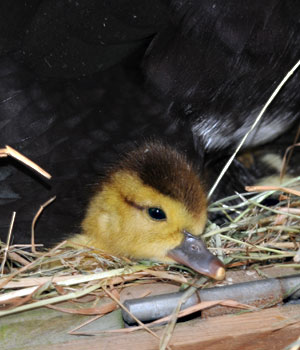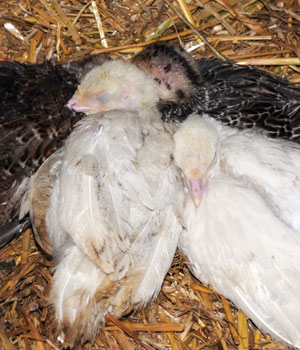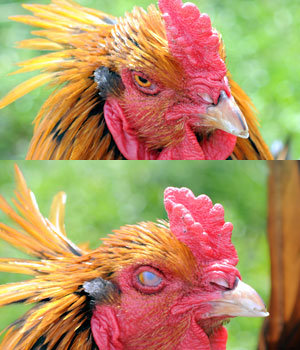Welcome to Relaxed Farming
- Alpacas
- Chickens
- Dairy Goats
- Ducks
- Geese
- Pigs
- Pygmy Goats
- Quail
- Rabbits
- Sheep
- Turkeys
- Polytunnel
- Photo Stories
- Video Stories
- Food
- Smallholding Map
- 2013
- 2014


- August
- September
- October
- November
- December
- January
- February
- March
- April
- May
- June
- July
- August


- 1
- 2
- 3
- 4
- 5
- 6
- 7
- 8
- 9
- 10
- 11
- 12
- 13
- 14
- 15
- 16
- 17
- 18
- 19
- 20
- 21
- 22
- 23
- 24
- 25
- 26
- 27
- 28
- 29
- 30
- 31
Thursday, 29th May 2014
First things first: the chicks in the middle photo are NOT dead; they are asleep... more about them shortly!!
And the duckling in the first photo has not lost the rest of his/her body - it is under 'mum' keeping warm whilst the head takes a quick look at the very new outside world. This duckling is one of several from our second hatch, this time by Orange. We are not sure how many there are yet but each time we peeked today there seemed to be more... We will hopefully be able to count them all tomorrow.
And so to our sleeping beauties! Our gang of 15 turkey chicks have managed to keep together much more today and this evening they ALL found their way back into the barn to sleep. They sorted themselves into three groups with two of them perching which was most impressive! This third group of four in the middle photo crashed out on top of a bale of straw and hardly moved when I went near them. We think they must have had a very active and exciting day exploring the smallholding and had worn themselves out: a little like the end of a class visit to Alton Towers where you all fall asleep in the coach on the way home!!!
You can see by looking at the left hand white chick (who is incredibly scruffy) that his/her eyelids are tightly closed and he/she can see nothing. Eyelids protect the eyes, stop dirt from getting in and also prevent the eye from drying out (in humans too). Now look at the cockerel in the third picture. In the top part of the picture, the eye is open, in the bottom half you can still see the eye BUT there is a see-through eyelid covering it. Poultry and indeed all birds have what is known as a 'third' eyelid called the 'nictitating membrane'. This third eyelid protects the eye, as do the normal eyelids, but it is semi-transparent which means the bird can still see and so can continue to feed or fly or walk AND also keep a look out for predators as well. Very clever!!
Finally, we have 'some' pipping in the remaining two clutches of Orpington eggs but we are worried some of the eggs have got too dry. We will investigate further tomorrow!! The group of nine that hatched yesterday are all adorable and had their first feed and drink today with their Light Sussex mum!!!


